History
Apprehending the power of nutritional therapy in preserving the kidney health and medicament has its rational in ancient knowledge of science. Ancient writing of the Indian Ayurveda, provides information on this subject. Woefully, the current development in lifestyle and industrialized refining systems of food has obscured the old knowledge with the commercial trend in market. Ayurveda puts whacking value on diet and dietary habits known as “pathya”(to be used) means those foods and activities, which does not do any damage to the body and which gives happiness to body and mind. Eat to live a healthy and disease free life is the philosophy of Ayurvedic nutrition.

“Pathya sati gadartasya kimoshadhnishevaney Apathya sati gadartasya kimoshadhnishevaney”. (Ayurved Sarsangrah)
Ayurvedic treatment encompasses trio of Aushadh (medicament) Anna (Do’s and don’ts of diet) and Vihar (lifestyle). It has been stated in Ayurveda that if an individual is suffering from any ailment and if following stringently the “pathya” and “apathya” he may not entail medicine or in simpler words Virtuous diet is the key of the longevity and quality of life. This article serves as a dietary primes for the both non-nephro and nephro physician assistant by outlining the peer-reviewed best practices that are available and encouraged for patient with kidney disease.
Kidney Disease
The disease is defined as a reduction kidney function over time and is characterised by anuria, oligospermia, dysuria and retention of urine. The kidneys regulate the composition and volume of blood, remove metabolic wastes in the urine, and help control the acid/ base balance in the body. They activate vitamin D needed for calcium absorption and produce erythropoietin needed for red-blood-cell synthesis. Kidney also makes an enzyme, rennin which affects blood pressure through negative feedback. Kidney disease is characteristically a progressive disease. Reduction of kidney function—defined as an estimated glomerular filtration rate (eGFR) < 60 mL/min/1.73 m2 and/ or Evidence of kidney damage, including persistent albuminuria. As eGFR declines, complications occur more commonly and are more severe.
These may include:
- Malnutrition.
- Metabolic acidosis due to reduced acid (hydrogen ion) excretion.
- Hyperkalemia.
- Mineral imbalance and bone disorder (calcium, phosphorus, and vitamin D).
- Anemia due to impaired erythropoiesis and low iron stores.
- Cardiovascular disease (CVD).
The nutritional management of kidney disease can affect long term health and quality of life. The goal for nutritional management is optimal metabolic control through balance between food intake, physical activity and if necessary medication to avoid complication. All people with kidney should receive individual advices on nutrition from a registered dietician or from registered Vaidya’s. The nutritionist under the directive of Vaidya can apply the nutrition guideline while considering current and intake, individual energy need, life stage, life style and any medical conditions of the individual with kidney disease.
In kidney disease, the aim of nutrition intervention is prevent, monitor malnutrition, metabolism disorders, hyperkalaemia, CKD mineral and bone mineral disorder, calcium, phosphorous, parathyroid hormone, vitamin D, Anaemia, cardio vascular disease all through coordination of food especially protein, balancing of calcium, supplement iron, dietary restriction to phosphorous, potassium, salt and physical activity.
Management of nutritional goals for kidney disease:
The motive of medical nutrition therapy for the people with kidney disease is to continue good nutritional status, slow progression and to treat complications. For the people with kidney disease specific advice regarding dietary therapy will vary from patient to patient and need to be based clinical and laboratory finding. The process of dietary counselling often starts with a simple education session highlighting the need to alter diet in the context of CKD. The function of different nutrients in the body, the danger of excesses or deficiencies of certain nutrients, the food that are allowed, those that should be restricted and the support structure available to practically implement there changes in everyday living. Also, the dietary/ nutritional education is usually targeted at the house hold of the CKD patient rather than the individual patient. Nutrition and all form of kidney management should be individualised. The nutritional management of kidney disease follows the principle Ancient text to healthy eating” or Indian chronic kidney disease guideline or clinical practice guideline nutrition in CKD UK renal association/ national kidney foundation. Nutritional management seeks to improve or maintain the following-
- The quality of life for people with CKD.
- The physiological health of individual with CKD by establishing and maintain serum creatinine, urea and albuminuria.
- The nutritional status of people with CKD, by recognising that their micro and macronutrient requirement are similar to those of the general population.
- Management of CKD complications (anaemia, bone disease, malnutrition).
Chronic Kidney Disease (CKD) and Diet: Assessment, Management, and Treatment
Assess Kidney Function and Damage
| Test and Its Relevance |
Results |
Dietary Intervention |
| Estimated Glomerular Filtration Rate (eGFR)
eGFR estimates kidney function. As eGFR declines, complications are more likely and more severe.
|
eGFR (mL/min/1.73m2)
Not diagnostic of CKD ≥ 60
CKD 15–59
Kidney failure < 15 |
Evaluate eGFR to assess kidney function; track over time to monitor effectiveness of diet therapy.
Stable eGFR may indicate therapy is working.
Decline of eGFR reflects progression of CKD.
| Additional Information: |
| Natural Sources: |
| Saccharum officinalis (decoction of root)* |
| Boerrhavia diffusa (fresh juice)* |
| Solanum nigrum (fresh juice)* |
| Benincasa hispida (seed powder) |
| Carica papaya (unripe)fruit
Rheum emodi
Coriandum sativum |
|
Urine Albumin-to Creatinine Ratio (UACR)
UACR is the preferred measure for screening, assessing, and monitoring kidney damage. UACR estimates 24-hour urine albumin excretion. Unlike a dipstick test for urine albumin, UACR is unaffected by variation in urine concentration. |
UACR (mg/g)
Normal 0–30
Albuminuria > 30 |
Evaluate UACR over time to assess response to therapy and monitor progression of CKD.
Elevated albuminuria may reflect higher risk for progression.
A decrease in urine albumin may reflect response to therapy and may be associated with improved renal and cardiovascular outcomes.
| Additional Information: |
| Natural Sources: |
| Boerrhavia diffusa (fresh juice)* |
| Moringa oleifera (fresh juice of leaves) |
|
Slow Progression Therapy
| Therapeutic Goal and Its Relevance |
Ranges/Goals |
Dietary Intervention |
|
Control Blood Pressure
Blood pressure control slows progression of CKD and lowers CVD risk.
Sodium plays a large role in blood pressure control in CKD as a result of alterations in sodium excretion by the kidneys. |
Less than 140/90 mmHg. |
· Limit sodium intake to 2,300 mg a day or less (IOM, 2013).
Weight reduction may be beneficial.
Monitor serum potassium in patients on renin angiotensin aldosterone system (RAAS) antagonists; limit dietary potassium intake when serum potassium > 5 mEq/L.
| Additional Information: |
| Natural Sources: |
| Terminalia arjun (decoction of bark)* |
| Emblica officinalis (fresh juice) |
| Euryale ferox (fruit) |
| Coriandum sativum(seed)* |
| Nelumbo nucifera (flower,rhizome) |
|
|
Reduce Albuminuria
Decreased albuminuria is associated with slower progression of CKD, particularly in diabetics. Limiting dietary protein may reduce albuminuria and improve blood glucose control, hyperlipidemia, blood pressure, renal bone disease, and metabolic acidosis. (deZeeuw et al, 2004). |
Reduce or stabilize the amount of albumin lost in the urine. |
Limit excessive dietary protein as follows:
Non diabetic: 0.8 g protein/kg/day.Diabetic: 0.8-1.0 g protein/kg/day.
Evidence suggests that further lowering to 0.6 g protein/kg/day in non-diabetic patients may be beneficial, but adherence is difficult. Some patients may be able to achieve this level with intensive counselling.
| Additional Information: |
| Natural Sources: |
| Vetiveria zizanioides (root powder)*
Coriandrum sativum (whole plant powder)* |
| Hemidesmus indicus (root powder)* |
| Moringa oleifera (fresh juice of leaves) |
|
|
Manage Diabetes
Blood glucose control may help slow progression of CKD (DCCT,1993; UKPDS,1998)
Good control of newly diagnosed diabetes may slow progression of CKD. Tight control in diabetes of long duration may not be indicated. |
Individualize A1C/eAG goal
eAG = estimated average glucose |
Consider less-stringent control for patients with histories of hypoglycemia, the elderly, and patients with multiple co-morbid conditions.
Instruct patients to treat hypoglycemia with cranberry juice cocktail, grape or apple juice, glucose tablets, or 10 jelly beans to prevent hyperkalemia. |
Prevent, Monitor, and Treat Complications
| Complication and Its Relevance |
Ranges/Goals |
Dietary Intervention |
|
Malnutrition
Malnutrition is common in CKD; as eGFR declines, so may appetite. Malnutrition in CKD patients is associated with increased morbidity and mortality. |
Albumin > 4.0 g/dL
Normal range: 3.4–5.0 g/dL
Serum albumin < 4.0 g/dL, prior to initiation of dialysis, may predict morbidity and mortality
(Kaysen et al, 2008).
Blood urea nitrogen (BUN) < 20 mg/dL |
Manage with adequate calories and nutrients.
A low protein diet (0.6 g/kg) may require supplemental riboflavin and cyanocobalamin. Supplemental pyridoxine may be beneficial due to medication-vitamin interactions.
It may be prudent to provide adequate amounts of thiamin and folic acid. High doses of vitamin C are not recommended. Data do not support routine supplementation with niacin and vitamins A, E, and K. In advanced CKD, certain vitamins may accumulate due to reduced excretion (Steiber & Kopple, 2011).
|
| Additional Information: |
| Natural Sources: |
| Chena (made from cow milk) |
| Euryale ferox (fruit) |
|
|
Metabolic Acidosis
Patients with CKD are at risk for metabolic acidosis as a result of reduced excretion of acid load. |
Bicarbonate (CO2) > 22 mEq/L
Normal range: 21–28 mEq/L |
Dietary protein is a source of metabolic acid. Serum bicarbonate levels may increase with dietary protein restriction. (Gennari et al, 2006)
Sodium bicarbonate supplementation may be prescribed to improve nutritional parameters and slow rate of CKD progression (de Brito-Ashurst et al, 2009). Monitor blood pressure closely when this medication is used, as some patients may experience elevated blood pressure associated with increased sodium load.
| Additional Information: |
| Natural Sources: |
| Chena (made from cow milk) |
| Achyranthes aspera (fresh juice) |
| Cichorium intybus (rhizome)* |
| Coriandrum sativum (seed decoction)* |
|
|
Hyperkalemia
Patients with CKD are at risk for hyperkalemia as a result of reduced potassium excretion,
intake of high-potassium foods, metabolic acidosis, and medications that inhibit potassium excretion, such as RAAS antagonists for blood pressure control. |
Potassium: 3.5–5.0 mEq/L
Hyperkalemia is usually not seen until CKD is advanced, but may be seen at higher eGFRs in people with diabetes. |
Counsel patients to restrict dietary potassium when serum level is 5.0 mEq/L or higher.
Caution patients to avoid potassium-containing salt substitutes.
Instruct patients with diabetes to treat hypoglycemia with cranberry juice cocktail, grape or apple juice, glucosetablets, or 10 jelly beans to prevent hyperkalemia.
Counsel patients to adhere to sodium bicarbonate therapy, if prescribed. Correction of acidosis may lower potassium. |
|
CKD Mineral and Bone Mineral Disorder (CKD-MBD)
CKD-MBD is renal bone disease that occurs when the kidneys fail to maintain serum calcium and
phosphorus levels. |
See sections on calcium, phosphorus, parathyroid hormone (PTH), and vitamin D. |
Existing guidelines on management of CKD-MBD reflect consensus rather than high-grade evidence. Early intervention may help prevent vascular calcification and secondary hyperparathyroidism.
The kidneys maintain calcium and phosphorus levels and activate vitamin D. As kidney function declines, complex interactions occur that affect calcium, phosphorus, vitamin D, and the parathyroid gland. Abnormal levels of PTH (measured as intact or iPTH) may be seen. Mineral and bone disorders may result from these interactions. See the specific sections that follow.
| Additional Information: |
| Natural Sources: |
| Chena (made from cow milk) |
| Banana |
| Almond |
| Euryale ferox (fruit) |
| Trigonella foenum-graecum (seed) |
|
|
Calcium
Control of calcium and phosphorus levels helps to control PTH. |
Calcium: 8.5–10.2 mg/dL |
Dietary calcium recommendations for CKD have yet to be established.
Calcium-based phosphate-binding medications can increase total daily intake and elevate calcium.
Supplementation with active vitamin D increases the risk for hypercalcemia.
Use formula to correct calcium with hypoalbuminemia: Corrected calcium (mg/dL) = serum calcium (mg/dL)+0.8(4.0 -serum albumin g/dL)
| Additional Information: |
| Natural Sources: |
| Trichosanthes dioica (fruit)* |
|
|
Phosphorus
Control of phosphorus and calcium levels helps control PTH. |
Phosphorus: 2.7–4.6 mg/dL
Maintain within normal range.
Serum phosphorus levels may be
“normal” until CKD is advanced |
If serum phosphorus is elevated, dietary phosphorus restriction may be indicated. The recommended level of restriction has yet to be determined in CKD.
Dietary protein restriction decreases phosphorus intake. If further restriction is needed, counsel patients to reduce intake of foods with added phosphorus. (Uribarri, 2007).
Counsel patients to read ingredient lists for “phos” to identify foods with phosphate additives, as these additives may be absorbed more efficiently than food sources.
Limiting whole grains may help if further reduction is needed.
Phosphorus binders may be prescribed to lower phosphorus levels. Counsel patients to take binders with meals to help limit absorption of phosphorus from food and beverages.
|
|
Parathyroid Hormone (PTH)
Secondary hyperparathyroidism (elevated PTH) is associated with the most common cause of bone
disease in CKD. |
Normal PTH < 65 pg/mL
Measured as iPTH
PTH varies by level of kidney function and type of bone disease |
Dietary phosphorus restriction and use of active vitamin D or its analogs may help control PTH levels in CKD. Calcium supplementation may help as well. |
|
Vitamin D
The kidneys activate 25(OH) D (calcidiol) to 1, 25 (OH ) 2D (calcitriol or active vitamin D). Reduction of kidney function results in decreased production and conversion of calcidiol to calcitriol. There may be corresponding imbalances of calcium, phosphorus, and PTH. |
Vitamin D ≥ 20 ng/Ml.
Measured as 25(OH)D
Maintain within normal range (IOM, 2011). |
Supplementation may be indicated. Specific requirements in CKD have yet to be determined.
Ergocalciferol (vitamin D2) or cholecalciferol (vitamin D3) may be used in early CKD to replete vitamin D.
Active vitamin D (calcitriol) or its analogs (doxercalciferol, paricalcitol, or alfacalcidol) may be used as eGFR declines (ibid).
Monitor for hypercalcemia and/or hyperphosphatemia when using supplements. Active vitamin D increases calcium and phosphorus absorption. |
Anemia
Anemia may develop early during the course of CKD due to inadequate synthesis of erythropoietin by the kidneys. |
Hemoglobin 11–12 g/dL
Without CKD:
Women: 12–16 g/dL
Men: 14-17 g/dL
Transferrin Saturation (TSAT) >20%
Ferritin > 100 ng/mL
Without CKD:
Women: 18–160 ng/mL
Men: 18–270 ng/mL |
Both iron supplementation and injectable erythropoiesis-stimulating agents (ESAs) have been used to correct anemia. The risks and benefits of these treatments in CKD are not yet defined. (Besarab & Coyne, 2010).
| Additional Information: |
| Natural Sources: |
| Beans |
| Roasted moog |
| Brown rice |
| Green leafy vegetable |
| Raisins |
| Hemidesmus indicus* |
|
|
Cardiovascular Disease (CVD)
Patients with CKD are at high risk for developing CVD; the risk increases as eGFR declines.
Restoring immunity
Oxidative stress, largely contributes to immune system dysregulation |
Total cholesterol < 200 mg/dL
LDL cholesterol < 100 mg/Dl
HDL cholesterol > 40 mg/dL
Triglycerides < 150 mg/dL |
Decreasing intake of saturated and trans fats (substituting for monounsaturated and polyunsaturated fats), along with physical activity, can help control hyperlipidemia and reduce inflammation.
Administration of the antioxidant N-acetyl-cyteine has been found to significantly reduce the incidence of cardiovascular events.
| Additional Information: |
| Natural Sources: |
| Boerrhavia diffusa (fresh juice)* |
| Nelumbo nucifera (fresh juice rhizome)* |
| Albizzia lebbeck (fresh juice bark)* |
|
|
|
|
Source: (*Herbs: Mentioned in Ayurvedic System of Medicine; National kidney disease education programme)
Future direction
This information is helpful to identify inconsistencies of case across the globe and to further monitor progress in future patients may be motivated to take a mass responsibility in preventing the progression of CKD through lifestyle interventions and treatment adherence. The raise awareness about kidney disease will bring together the best available evidence to inform strategies to reduce national, regional and global burden of the disease and its risk factors.

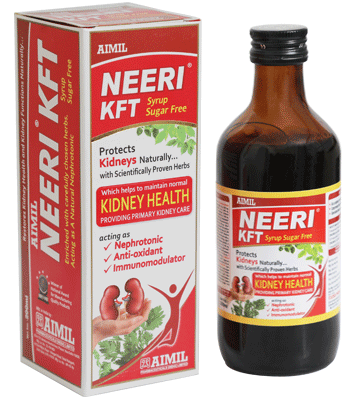




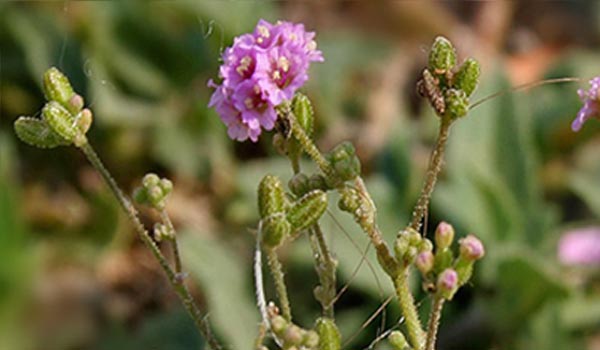

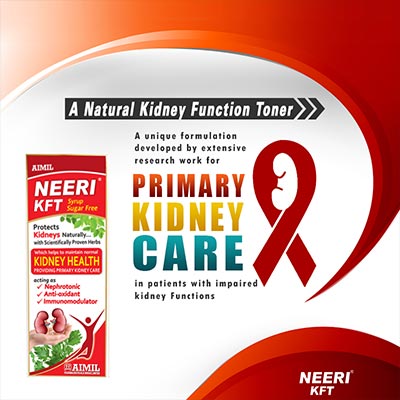
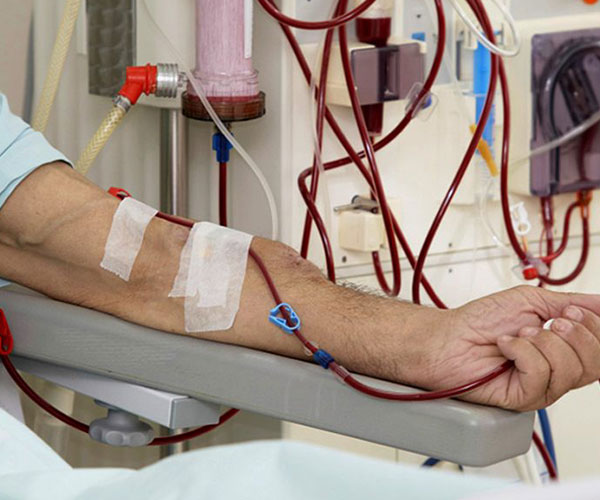




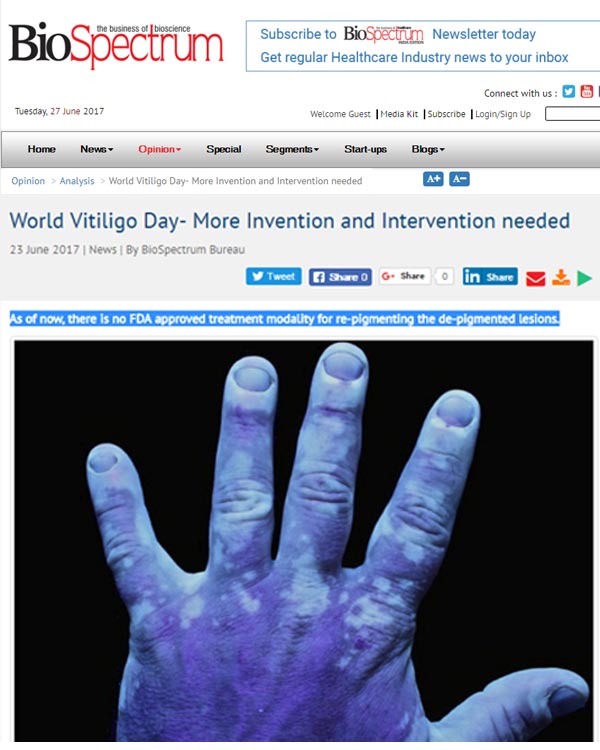
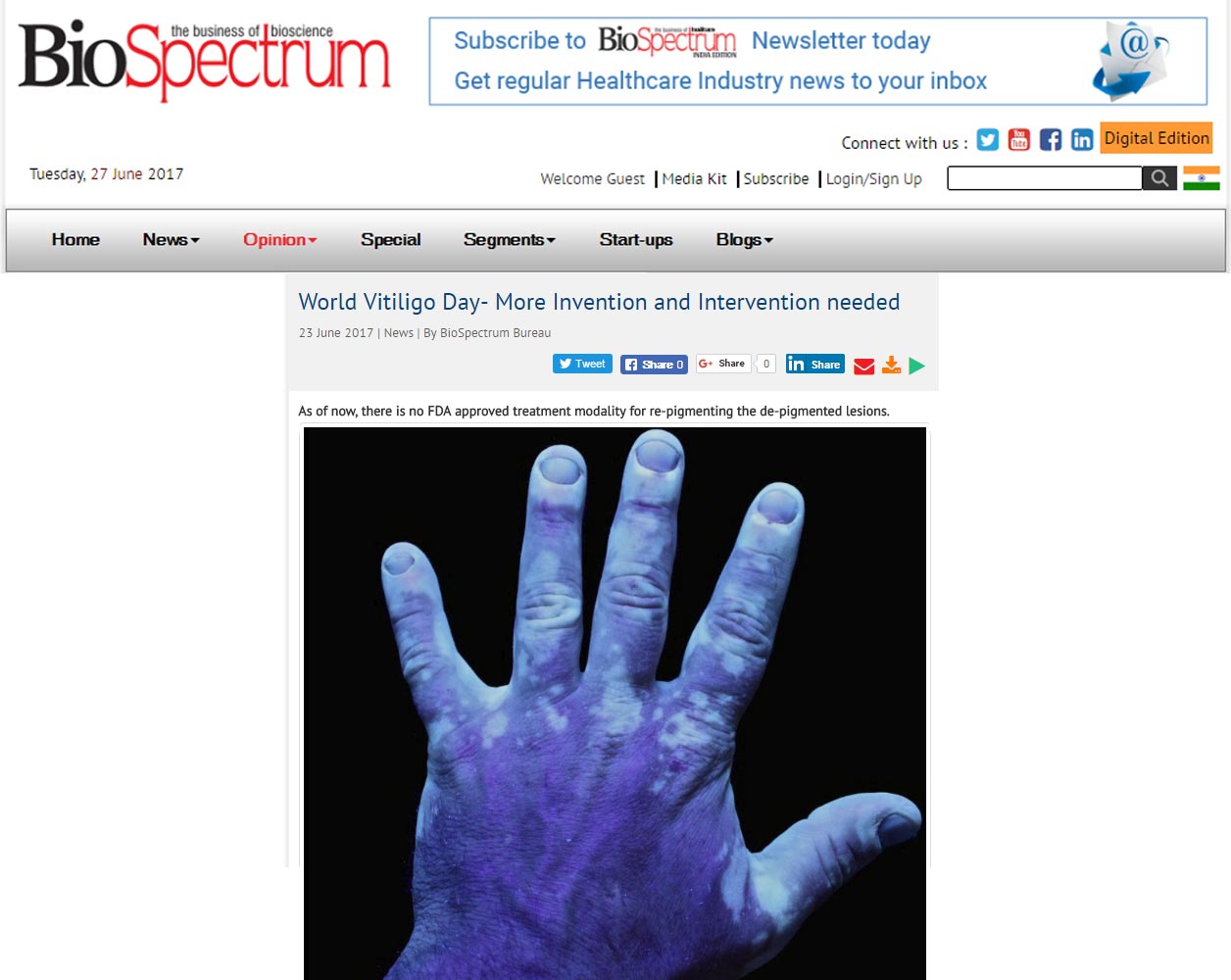
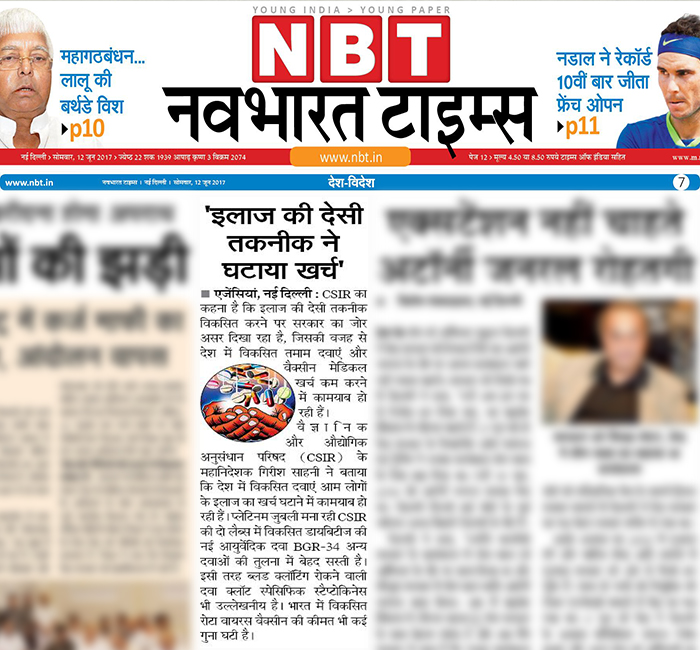

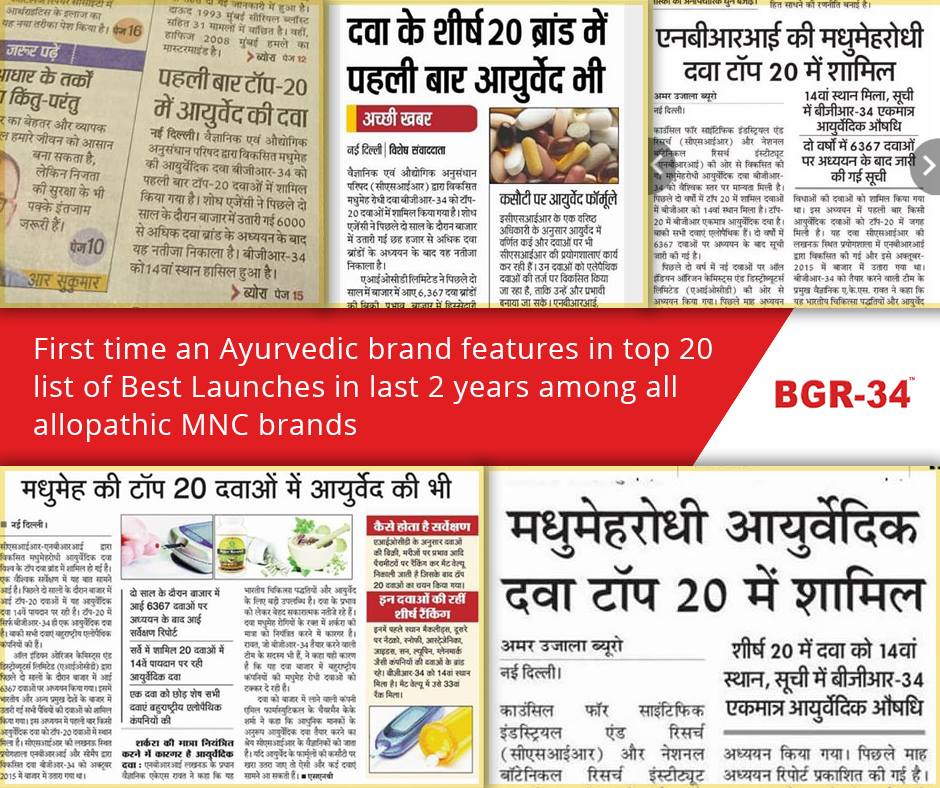
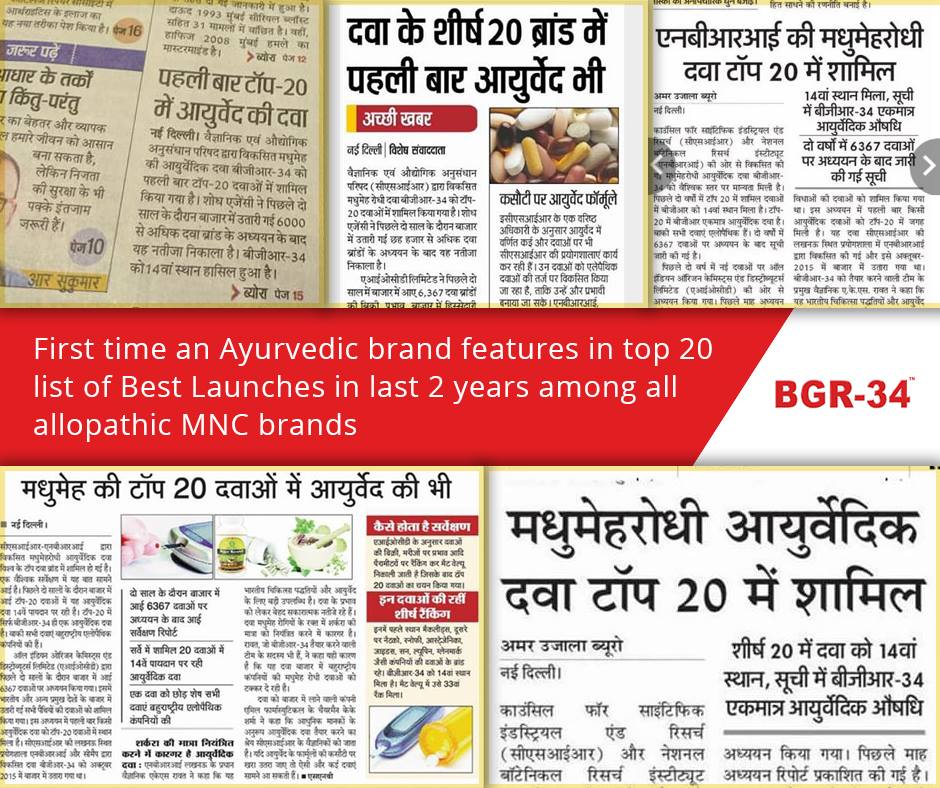
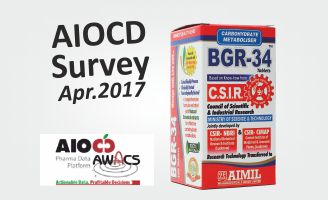

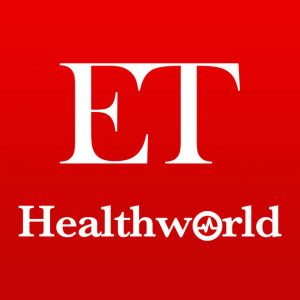 New Delhi, More than a year after its launch, BGR-34 remains the most cost-effective Ayurvedic medicine for diabetes, claims a top executive of AIMIL Pharmaceuticals, which manufactures and markets the medicine.
New Delhi, More than a year after its launch, BGR-34 remains the most cost-effective Ayurvedic medicine for diabetes, claims a top executive of AIMIL Pharmaceuticals, which manufactures and markets the medicine.
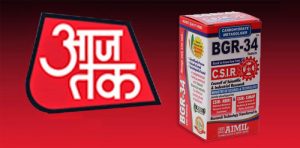 है. बीजीआर 34 अपनी गुणवत्ता और लोकप्रियता के मानकों पर 14वें पायदान पर रही. हैरानी की बात है कि बाकी सभी 19 दवाएं ऐलोपैथिक पद्धति से बनाई गई हैं. बीजीआर 34 इकलौती आयुर्वेदिक और भारतीय चिकित्सा पद्धति के आधार पर बनाई गई वैज्ञानिक दवा है.
है. बीजीआर 34 अपनी गुणवत्ता और लोकप्रियता के मानकों पर 14वें पायदान पर रही. हैरानी की बात है कि बाकी सभी 19 दवाएं ऐलोपैथिक पद्धति से बनाई गई हैं. बीजीआर 34 इकलौती आयुर्वेदिक और भारतीय चिकित्सा पद्धति के आधार पर बनाई गई वैज्ञानिक दवा है.